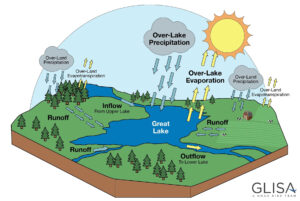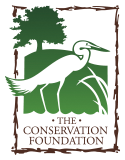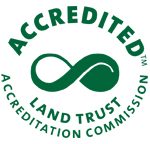Hidden Lake, Picture Courtesy of Forest Preserve District of DuPage County
I just finished “The Blue Machine: How the Ocean Works” by Helen Czerski, a physicist and oceanographer. It is a wonderful book that explores how the ocean works and how it is a machine that acts like an engine, as well as its past and future. Living in the Midwest where we are closer to lakes than oceans, it seems to me that a blog about lakes would be interesting. So, let’s discuss how lakes work, their many colors, why conservation and preservation of lakes is important, and finally how The Conservation Foundation has been protecting water quality for more than 50 years.
Lakes are important to humans and the environment. They provide water and energy, regulate stream flow, and moderate droughts. Lakes also moderate temperatures and affect the climate of the surrounding land.
Lakes can be formed by tectonic plates moving and breaking the Earth’s crust. The resulting cracks, called faults, can form natural basins. When filled with rainwater or a nearby stream, a lake is formed.
Interestingly, lakes can have many colors. The color of a lake depends on what’s in the water, as well as water depth, land use, air temperature, precipitation, and elevation. Some examples of those colors are:
- Blue: Blue lakes are usually deeper than green or brown lakes. They are found in places with cooler summer temperatures and high precipitation.
- Green: Green lakes have more algae, sediment, and organic matter than blue lakes.
- Brown: Brown lakes are typically surrounded by forests or wetlands. Forests provide dark organic material that dissolves in lake water like a teabag (leaf tannins).
- Turquoise: Fine particles of pulverized rock can cause water to appear blue green.
In her book, Ms. Czerski describes the ocean as a machine that acts like a dynamic engine because of its ability to turn heat into motion. In a similar fashion, lakes are also machines. Like a machine, lakes have inputs and outputs.

The Water Cycle. Source of Picture: Great Lakes Integrated Sciences and Assignments (GLISA)
Runoff from over-land precipitation and over-lake precipitation (like rain or snow), inflow from higher lakes, runoff from streams and rivers, and runoff from agricultural land all feed lakes. Lakes themselves provide outflow to lower lakes, outflow to streams and rivers, and put moisture back into the environment from evaporation. Lakes also mitigate the effects of evapotranspiration by improving soil moisture and water levels. In case you were wondering like I was, evapotranspiration is a fancy term for the movement of water from land to the atmosphere via evaporation and transpiration of water vapor from plants. It’s an important and fundamental part of the water cycle (see graphic).
Regardless of their color, lakes regulate river flows, provide habitats, moderate temperatures, store water, and provide recreational, economic, and health benefits for humans. Lakes regulate river flows by trapping nutrients and sediments from rivers and streams that flow into them. Providing habitat helps to preserve the species that depend on them. Lakes moderate the climate of the surrounding land. Lakes store water, recharging groundwater aquifers and moderating droughts. Lakes are a popular destination for boating, fishing, swimming, and other water sports, providing endless hours of enjoyment for people of all ages. See The Conservation Foundation’s Nature Rx program for more details on the health benefits of the outdoors.
By working together to protect and preserve our lakes, we can help to ensure that they remain healthy and beautiful for future generations to enjoy.
Although The Conservation Foundation doesn’t specifically work on lakes, our land conservation work certainly benefits all water bodies, especially rivers, streams, and wetlands. As previously discussed, the rivers and lakes interact. These interactions include:
- Water drainage: Rivers and streams drain excess water from lakes, maintaining their average level.
- Resource sharing: Rivers and streams bring nutrients and salts from mountains to lakes, ponds, and wetlands at lower elevations.
- Pollution: Upstream and downstream pollution can affect the entire ecosystem of both rivers and lakes.
- Water exchange: Rivers and lakes exchange water, sediments, dissolved constituents, and energy.
The Conservation Foundation works in many collaborative and innovative ways to improve water quality in our local streams and rivers. Over the years we have built strong relationships with communities and have proven ourselves as a leader in river and watershed protection through programs like:
- Providing technical staffing and support to local watershed management groups.
- Coordinating opportunities for people to participate in protecting clean water like the DuPage County River Sweep, Storm-Drain Stenciling, and Conservation@Home.
- Leading the Fox River Initiative – connecting people to the Fox River through art and education.
- Tailoring our programs through our Conservation In Our Community Program to fit a community’s needs and strengthen a conservation culture.
- Expanding the Salt Smart Collaborative to provide a regional clearinghouse of resources for reducing road salt use while maintaining public safety.
- Working with developers to encourage stormwater best management practices and provide for long-term, funded management of those practices through our Natural Areas Assurance Program.
- Preservation of water levels and green areas, which address evapotranspiration (I know a good word when I see one).
And all of this positively affects lakes like Hidden Lake (pictured above) and others throughout the Northeast Illinois region.
So how can you contribute to conservation efforts that help support clean water in streams, rivers, and lakes of all colors (and for the benefit of people of all colors, too)? Well, water conservation is what The Conservation Foundation has been doing for more than 50 years. We can all do more together than we can alone. Join our collective momentum – become a member today!
Learn more about local efforts here!
Feel free to comment on this blog with your thoughts on water conservation.
By Steve Stawarz, Oak Brook
DuPage County Advisory Council Member



